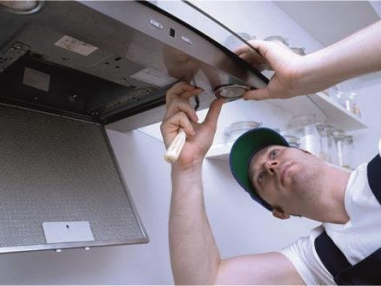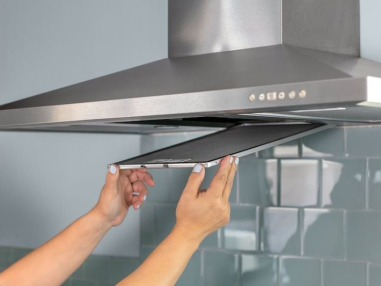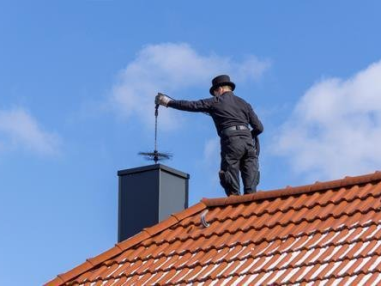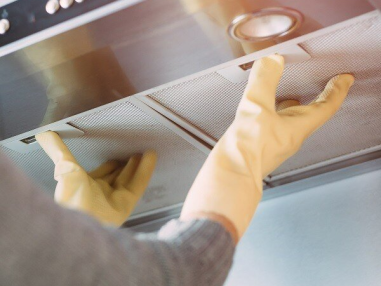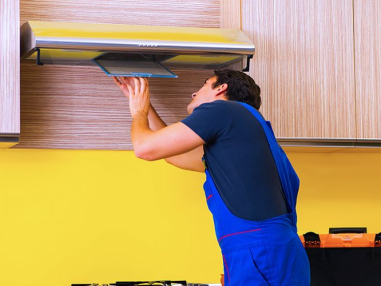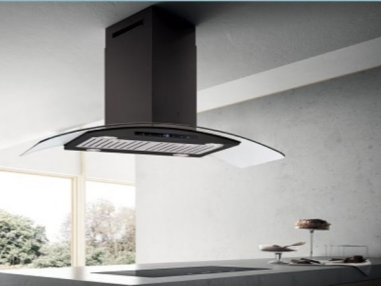Island Chimney Dismantle
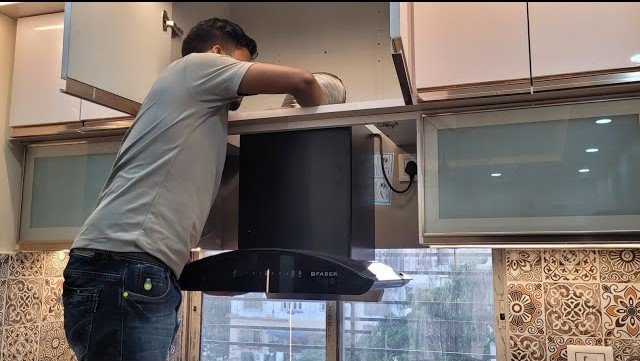
Dismantling an island chimney can be a complex task due to its weight, potential electrical components, and unique support structure. Here's a breakdown to help you decide if you can tackle this project yourself
Suitable for DIY Dismantle (if you have):
Strong Skills and Confidence: You'll be working with a potentially heavy unit, electrical connections, and potentially dismantling the support structure. Experience with disassembling complex furniture or fixtures is essential.
Advanced Tools: Screwdrivers, wrenches, socket wrench set (depending on the chimney), pliers, a stud finder, and possibly a level for the support structure.
Helper(s): Due to the weight and awkwardness of the island chimney, having at least one helper is crucial for safe dismantling.
Shutoff Capabilities: Ability to locate and turn off the electrical breaker for the chimney circuit and shut off the water supply (if the chimney has water
features).
Steps Involved in DIY Dismantle (General Overview):
Safety First: Turn off the electrical breaker controlling the chimney circuit. If the chimney has water features, turn off the water supply valve. Wear gloves,
safety glasses, and a dust mask for protection.
Clear the Area: Remove any appliances or items from around the island chimney to create a spacious work area.
Identify Mounting and Electrical Connections: Locate the screws, bolts, or brackets that secure the chimney body to the support structure. Look for electrical wires safety glasses, and a dust mask for protection.
Disconnect Electrical Wires (if applicable): If your chimney has electrical components like lights or a fan, carefully disconnect the wires following the
manufacturer's instructions (unplug from the socket if possible) or consult a qualified electrician for safe disconnection. Never attempt electrical work if you're
unsure.
Dismantle the Support Structure (if applicable): Depending on the design, your island chimney might have a separate support structure attached to the ceiling or
integrated into the island itself. Identify how it's secured (screws, bolts) and carefully dismantle it with your helper(s) following the reverse order of assembly
(if a manual is available). Ensure proper support for the chimney during this process.
Dismantle the Chimney Body: Use wrenches, sockets, or screwdrivers to remove the screws, bolts, or brackets holding the chimney to the support structure. Crucially
important: Have your helper(s) assist you in safely lowering the unit to avoid damaging yourselves or the surroundings.
Disconnect Vent Pipes: Locate the connection point between the chimney's vent and the main venting system. Important Note: Extensive vent system dismantling,
especially if it involves the ceiling or roof, is strongly recommended for professional chimney sweeps due to safety considerations and proper sealing techniques.
Important Considerations for Dismantle:
Weight of the Chimney: Island chimneys can be very heavy. Ensure you and your helpers can safely lower the unit without risking injuries.
Electrical Safety: If your chimney has electrical components, only disconnect them if you're comfortable and familiar with basic electrical work. Otherwise, consult a qualified electrician to avoid the risk of shocks or malfunctions.
Support Structure Dismantle: Be cautious while dismantling the support structure. Ensure the chimney remains stable throughout the process. Use a level to check for proper balance if needed.
Vent System Disconnection: Extensive dismantling of the vent system, especially involving the ceiling or roof access, is best left to a qualified chimney sweep. They
have the expertise and safety measures to ensure proper sealing and prevent leaks after re-installation of a new vent system (if applicable).
When to Call a Professional:
Complex Electrical Wiring: If the chimney has complex electrical wiring or you're unsure about safe disconnection procedures, call a qualified electrician.
Heavy Chimney or Difficulty Dismantling: If the chimney is too heavy for you and your helpers to handle safely, or you encounter difficulties detaching it from the
support structure, seek help from a professional installer or contractor.
Extensive Vent System Removal: As mentioned earlier, leave extensive vent system dismantling, especially involving the ceiling or roof access, to a qualified chimney sweep.
In Conclusion:
Dismantling an island chimney can be a risky endeavor for most DIYers. The weight, potential electrical components, and support structure complexities pose
significant safety challenges. Unless you have the necessary skills, tools, and helpers to ensure a safe and controlled dismantling process, it's highly
recommended to hire a qualified professional for this task. They can dismantle the chimney efficiently and minimize the risk of property damage or personal injury.
